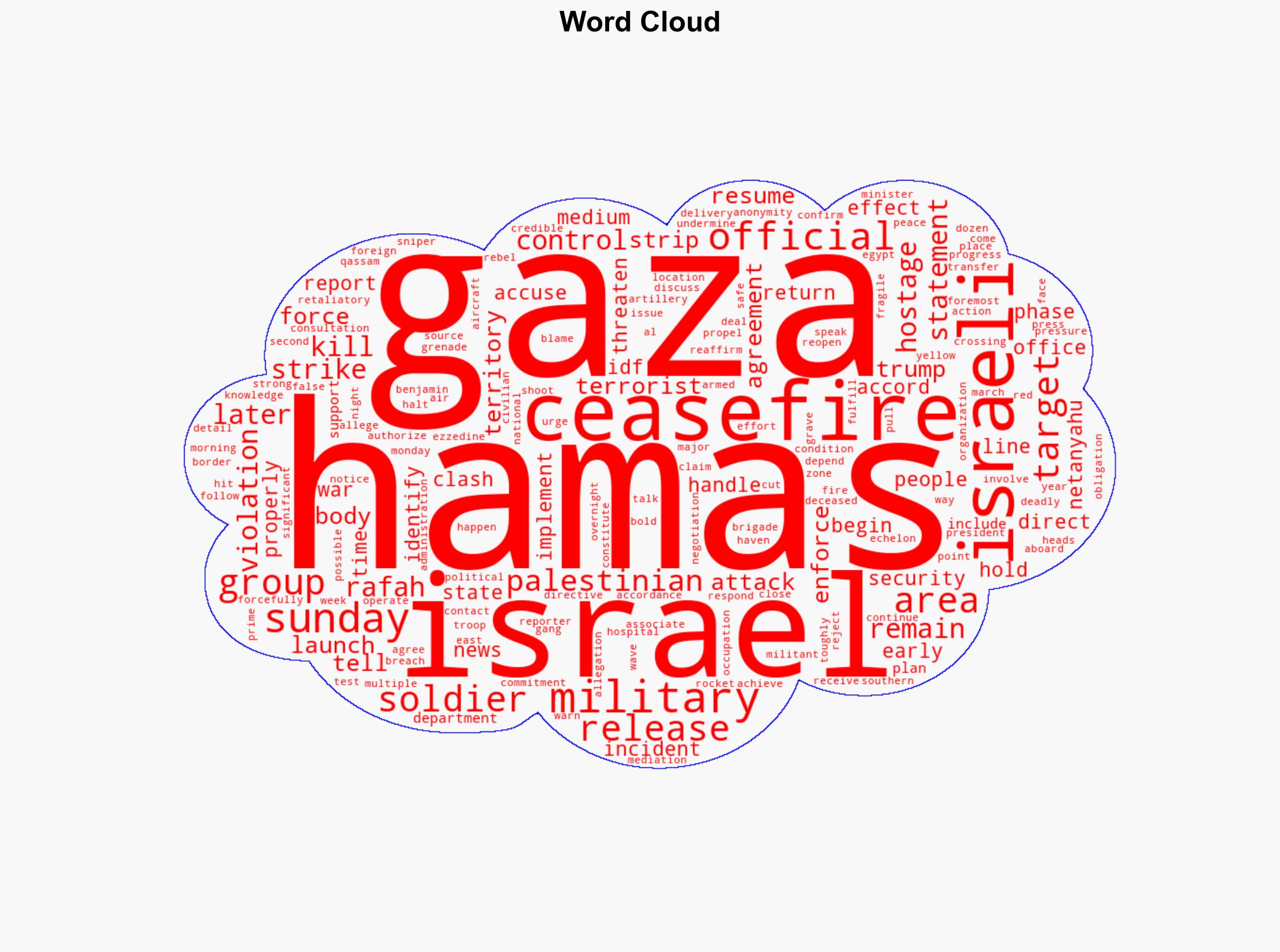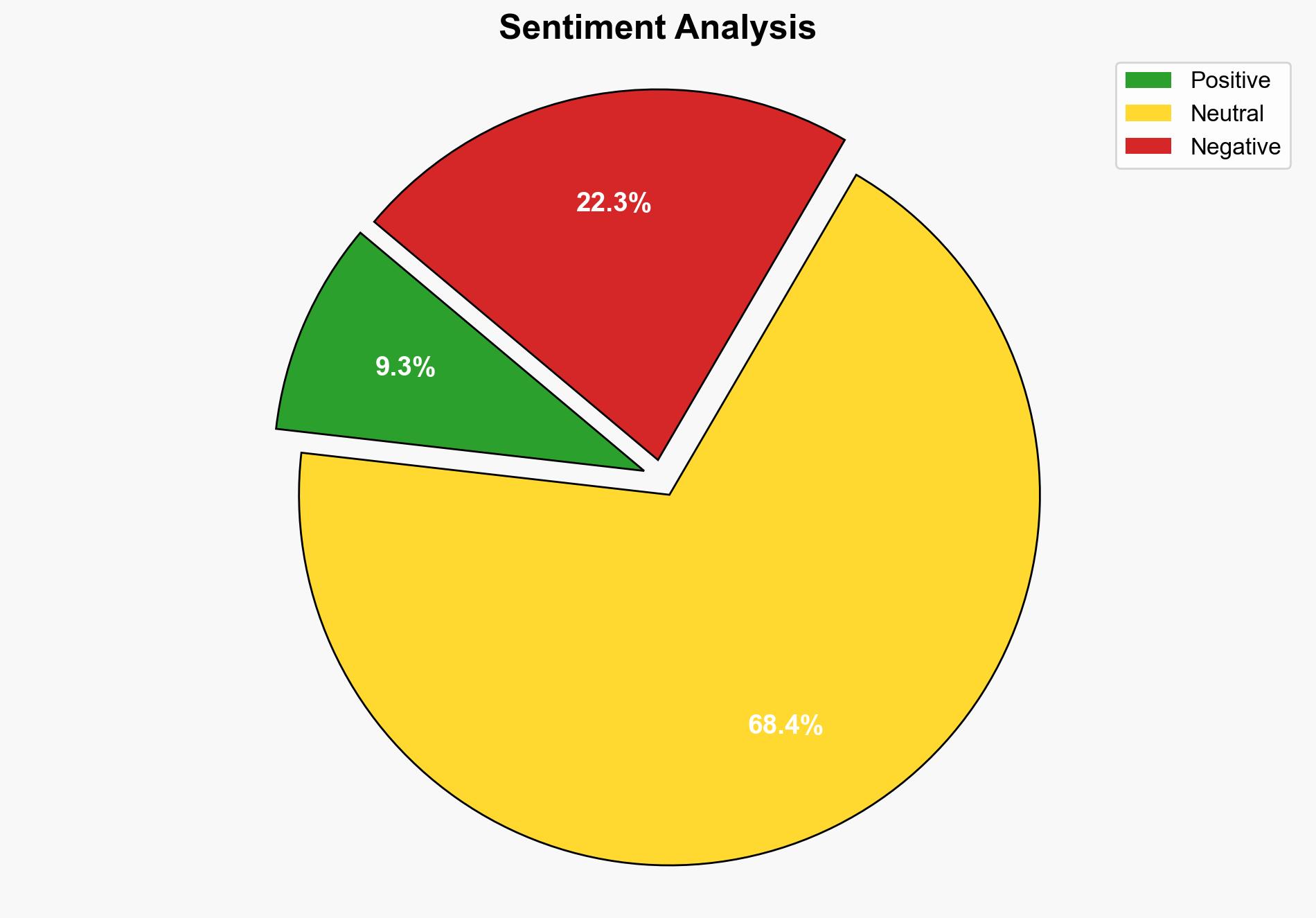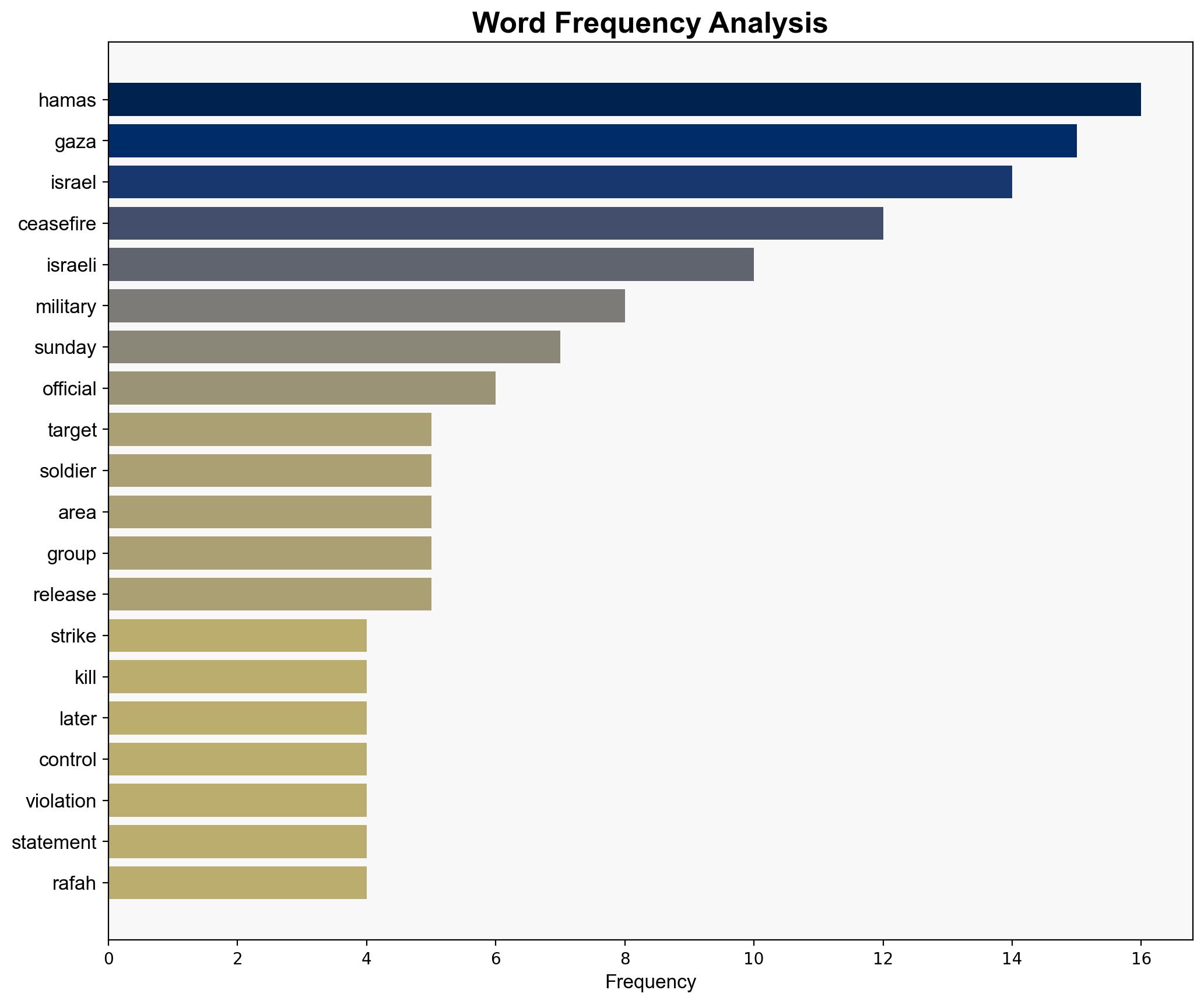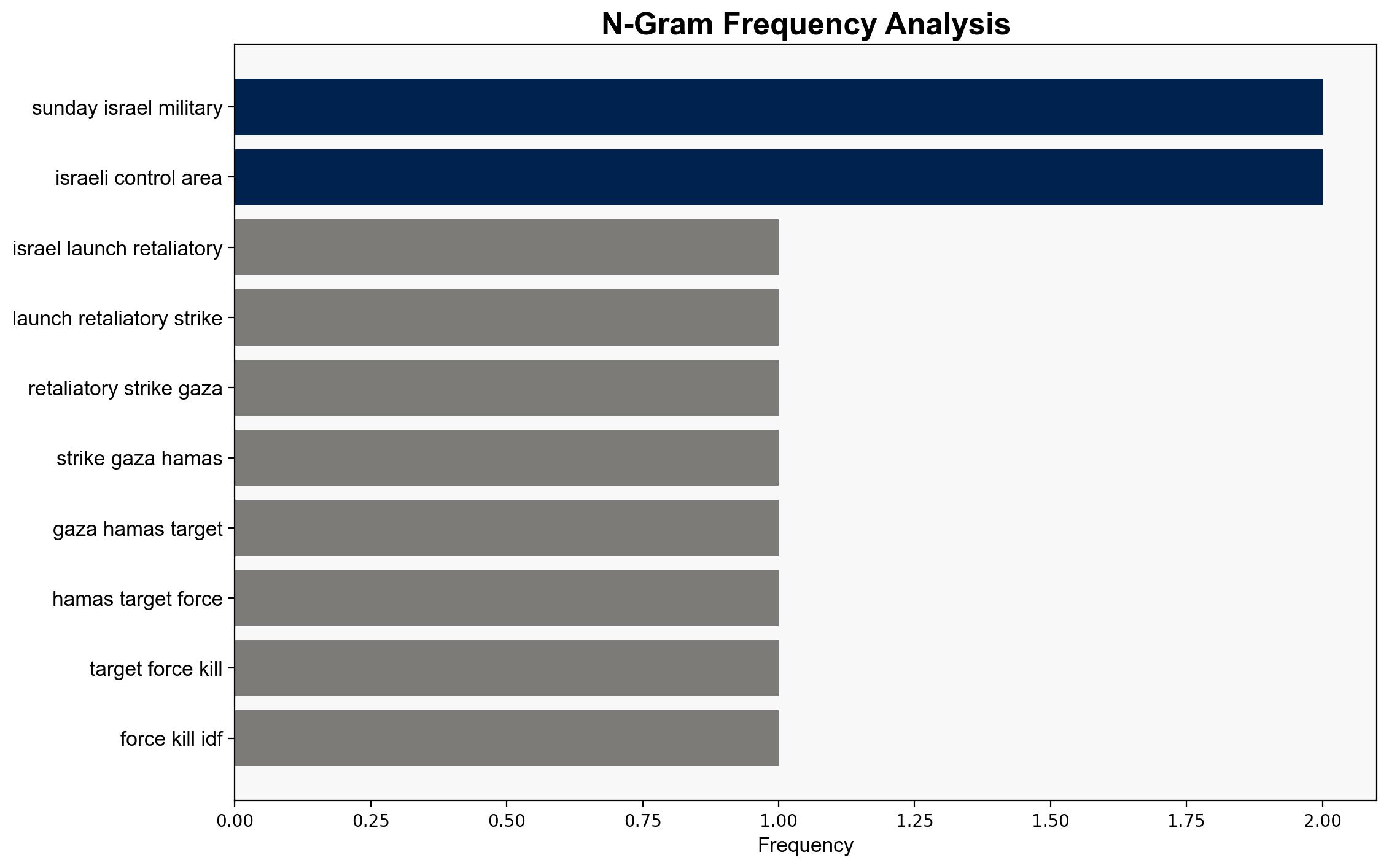Israel strikes southern Gaza saying Hamas attacked its soldiers – CBS News
Published on: 2025-10-19
Intelligence Report: Israel strikes southern Gaza saying Hamas attacked its soldiers – CBS News
1. BLUF (Bottom Line Up Front)
The most supported hypothesis is that the recent Israeli strikes in southern Gaza were a direct response to a perceived violation of the ceasefire by Hamas, involving an attack on Israeli soldiers. This assessment is made with moderate confidence due to conflicting reports and the complex nature of the conflict. Recommended action includes diplomatic engagement to reinforce ceasefire terms and prevent further escalation.
2. Competing Hypotheses
1. **Hypothesis A**: The Israeli strikes were a direct retaliation for a Hamas attack on Israeli soldiers, as claimed by Israeli sources. This hypothesis is supported by Israeli military statements and the context of ongoing tensions in the region.
2. **Hypothesis B**: The strikes were preemptive or opportunistic actions by Israel to weaken Hamas’ military capabilities, using the alleged attack as a justification. This is supported by Hamas’ denial of the attack and their accusation of false allegations by Israel.
Using ACH 2.0, Hypothesis A is better supported due to the alignment of Israeli military actions with their stated objectives and the historical pattern of responses to ceasefire violations. However, the lack of independent verification of the attack introduces uncertainty.
3. Key Assumptions and Red Flags
– **Assumptions**: It is assumed that Israeli military reports are accurate and that Hamas’ denial is a standard response to avoid blame. There is an assumption that the ceasefire terms are clearly understood by both parties.
– **Red Flags**: The anonymity of sources and lack of independent verification raise questions about the reliability of the reported attack. The timing of the strikes amidst ongoing negotiations could indicate strategic maneuvering by Israel.
4. Implications and Strategic Risks
The continuation of hostilities risks undermining the fragile ceasefire, potentially leading to a broader conflict. This could destabilize the region further, affecting economic conditions and increasing humanitarian needs. The involvement of international actors, such as the U.S., adds a geopolitical dimension that could complicate resolution efforts.
5. Recommendations and Outlook
- Engage in diplomatic efforts to clarify and reinforce the terms of the ceasefire, involving neutral third parties to mediate.
- Monitor for signs of escalation, including troop movements and rhetoric from both sides, to anticipate potential breaches.
- Scenario Projections:
- **Best Case**: Ceasefire holds with renewed diplomatic efforts leading to long-term stability.
- **Worst Case**: Full-scale conflict resumes, causing significant casualties and regional instability.
- **Most Likely**: Periodic skirmishes continue, with intermittent ceasefire breaches and ongoing negotiations.
6. Key Individuals and Entities
– Benjamin Netanyahu
– Ezzedine al-Qassam Brigades
– Donald Trump
7. Thematic Tags
national security threats, counter-terrorism, regional focus




